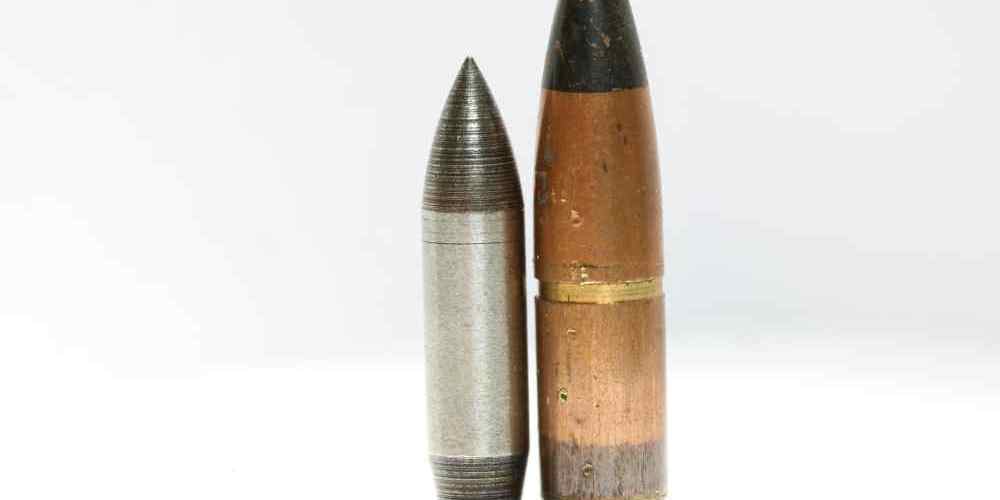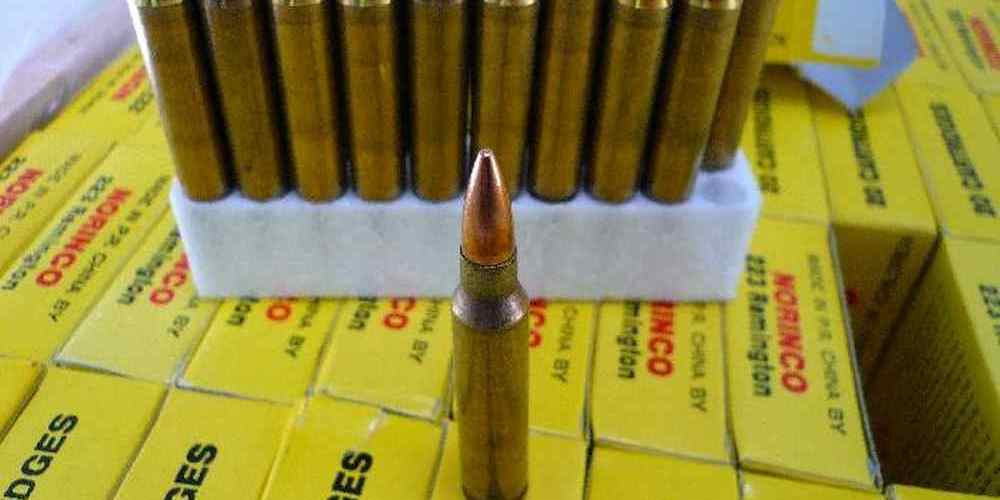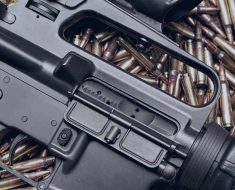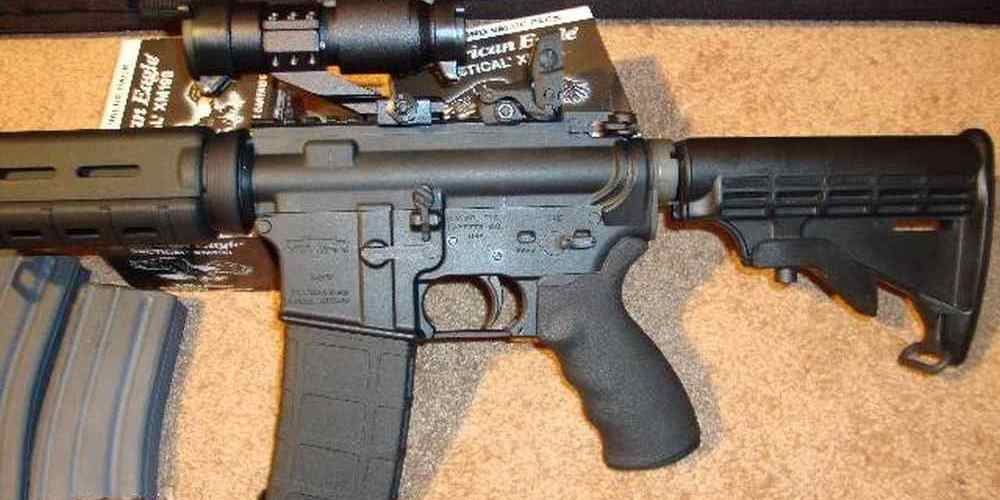“Maximize your AR15’s performance with the right ammo and muzzle velocity.”
Understanding Different Types of AR15 Ammo
When it comes to owning an AR15, understanding the different types of ammo available is crucial. One of the key factors to consider when choosing ammo for your AR15 is muzzle velocity. Muzzle velocity refers to the speed at which a bullet leaves the barrel of a firearm. This speed can greatly impact the performance and effectiveness of your AR15, so it’s important to choose the right ammo for your needs.
There are several factors that can affect muzzle velocity, including the type of gunpowder used, the weight of the bullet, and the length of the barrel. Different types of AR15 ammo can have varying muzzle velocities, so it’s important to do your research before making a purchase.
One of the most common types of AR15 ammo is .223 Remington. This ammo typically has a muzzle velocity of around 3,100 feet per second. .223 Remington ammo is known for its accuracy and reliability, making it a popular choice among AR15 owners. Another popular option is 5.56x45mm NATO ammo, which has a slightly higher muzzle velocity of around 3,200 feet per second. This ammo is commonly used by military and law enforcement agencies due to its superior performance.
If you’re looking for even higher muzzle velocity, you may want to consider .300 Blackout ammo. This type of ammo has a muzzle velocity of around 2,200 feet per second, making it a great choice for hunting or long-range shooting. .300 Blackout ammo is also known for its versatility, as it can be used in both supersonic and subsonic configurations.
When choosing AR15 ammo based on muzzle velocity, it’s important to consider your intended use for the firearm. If you’re planning on using your AR15 for hunting, you may want to opt for ammo with a higher muzzle velocity to ensure a clean and ethical kill. On the other hand, if you’re using your AR15 for target shooting or competition, you may be more concerned with accuracy and consistency than muzzle velocity.
It’s also worth noting that higher muzzle velocity doesn’t always equate to better performance. Factors such as bullet design, weight, and construction can all impact the effectiveness of a round. It’s important to test different types of ammo to see which performs best in your AR15.
In conclusion, understanding the different types of AR15 ammo and their respective muzzle velocities is essential for maximizing the performance of your firearm. Whether you’re a seasoned shooter or a beginner, taking the time to research and test different types of ammo can help you find the perfect match for your needs. So next time you’re shopping for AR15 ammo, consider the muzzle velocity and how it can impact your shooting experience.
The Importance of Muzzle Velocity in AR15 Performance
When it comes to maximizing the performance of your AR15 rifle, understanding the importance of muzzle velocity is key. Muzzle velocity refers to the speed at which a bullet leaves the barrel of a firearm, and it plays a crucial role in determining the accuracy, range, and stopping power of your shots. In this guide, we will explore the relationship between AR15 ammo and muzzle velocity, and how you can optimize your rifle’s performance by selecting the right ammunition.

One of the most important factors that influence muzzle velocity is the type of ammunition you use in your AR15. Different types of ammo have varying weights, powder loads, and bullet designs, all of which can impact the speed at which the bullet travels. For example, lighter bullets typically have higher muzzle velocities than heavier bullets, as they require less force to propel them out of the barrel. On the other hand, bullets with a higher powder load will have a faster muzzle velocity than those with a lower powder load.
Another factor to consider when selecting AR15 ammo is the caliber of the bullet. The caliber refers to the diameter of the bullet, and different calibers have different muzzle velocities. For example, a .223 caliber bullet will have a higher muzzle velocity than a .308 caliber bullet, as the .223 bullet is smaller and lighter. It is important to choose the right caliber for your AR15 rifle based on your shooting needs and preferences.
In addition to the type of ammunition and caliber, the length of the barrel also plays a role in determining muzzle velocity. A longer barrel allows for more time for the powder to burn and propel the bullet forward, resulting in a higher muzzle velocity. Conversely, a shorter barrel will have a lower muzzle velocity, as there is less time for the powder to burn and generate force. When selecting AR15 ammo, it is important to consider the length of your rifle’s barrel and how it will impact the muzzle velocity of your shots.
Optimizing your AR15 rifle’s performance requires a balance of factors, including muzzle velocity, accuracy, and range. By selecting the right ammunition for your rifle and understanding how it impacts muzzle velocity, you can improve the overall performance of your AR15. Whether you are a seasoned shooter or a beginner, taking the time to research and experiment with different types of AR15 ammo can help you achieve better results on the range or in the field.
In conclusion, muzzle velocity is a critical factor in determining the performance of your AR15 rifle. By selecting the right ammunition, caliber, and barrel length, you can optimize your rifle’s muzzle velocity and improve its accuracy, range, and stopping power. Experimenting with different types of AR15 ammo and understanding how they impact muzzle velocity can help you become a more effective and successful shooter. So next time you hit the range, remember the importance of muzzle velocity in maximizing your AR15’s performance.
How to Choose the Right Ammo for Your AR15
When it comes to choosing the right ammo for your AR15, there are a few key factors to consider. One of the most important factors is muzzle velocity, which refers to the speed at which a bullet leaves the barrel of a gun. Muzzle velocity can have a significant impact on the performance of your AR15, so it’s important to understand how it works and how to choose the right ammo for your needs.
Muzzle velocity is typically measured in feet per second (fps) and can vary depending on the type of ammo you are using. Higher muzzle velocities generally result in greater accuracy and longer effective range, while lower muzzle velocities may be better suited for close-range shooting or hunting smaller game.
There are several factors that can affect muzzle velocity, including the weight and shape of the bullet, the amount of gunpowder used, and the length of the barrel. In general, lighter bullets will have higher muzzle velocities than heavier bullets, while longer barrels can help increase muzzle velocity by allowing more time for the gunpowder to burn and propel the bullet forward.
When choosing ammo for your AR15, it’s important to consider the intended use of the rifle. If you are using your AR15 for long-range shooting or hunting larger game, you may want to opt for ammo with a higher muzzle velocity. On the other hand, if you are using your AR15 for close-range shooting or hunting smaller game, you may be better off with ammo that has a lower muzzle velocity.
It’s also important to consider the type of bullet you are using when selecting ammo for your AR15. Full metal jacket (FMJ) bullets are typically used for target shooting and military applications, while hollow point bullets are designed for hunting and self-defense. Each type of bullet will have its own unique muzzle velocity and performance characteristics, so it’s important to choose the right ammo for your specific needs.
In addition to muzzle velocity, it’s also important to consider the caliber of the ammo you are using. The caliber refers to the diameter of the bullet and can have a significant impact on the performance of your AR15. Different calibers are suited for different types of shooting, so it’s important to choose the right caliber for your needs.
When selecting ammo for your AR15, it’s important to do your research and choose a reputable manufacturer. Quality control can vary between manufacturers, so it’s important to choose a brand that is known for producing high-quality, reliable ammo. Additionally, it’s a good idea to test different types of ammo to see which performs best in your AR15.
In conclusion, choosing the right ammo for your AR15 is crucial for achieving optimal performance. Muzzle velocity is an important factor to consider when selecting ammo, as it can have a significant impact on accuracy and range. By understanding how muzzle velocity works and considering factors such as bullet weight, barrel length, and caliber, you can choose the right ammo for your specific needs. Remember to do your research, test different types of ammo, and choose a reputable manufacturer to ensure that your AR15 performs at its best.
Tips for Improving Accuracy with AR15 Ammo and Muzzle Velocity
When it comes to improving accuracy with your AR15, understanding the relationship between ammo and muzzle velocity is crucial. The type of ammunition you choose can greatly impact the performance of your rifle, so it’s important to select the right ammo for your needs. In this guide, we’ll explore the different types of AR15 ammo and how they affect muzzle velocity, as well as provide some tips for improving accuracy with your rifle.
One of the most important factors to consider when selecting AR15 ammo is the bullet weight. Heavier bullets typically have a higher muzzle velocity, which can result in greater accuracy at longer distances. However, heavier bullets also tend to have more recoil, which can affect your ability to stay on target. Lighter bullets, on the other hand, may have a lower muzzle velocity but can be easier to control. It’s important to find the right balance between bullet weight and muzzle velocity to achieve the best accuracy with your AR15.
Another factor to consider when selecting AR15 ammo is the type of bullet. Full metal jacket (FMJ) bullets are a popular choice for target shooting and training, as they are affordable and reliable. However, FMJ bullets may not expand upon impact, which can limit their effectiveness for hunting or self-defense. Hollow point bullets, on the other hand, are designed to expand upon impact, creating a larger wound channel and increasing stopping power. It’s important to choose the right type of bullet for your intended use to maximize accuracy with your AR15.
In addition to bullet weight and type, the quality of the ammunition can also impact muzzle velocity and accuracy. Higher quality ammunition is typically more consistent in terms of powder charge and bullet weight, which can result in more consistent muzzle velocity and better accuracy. It’s worth investing in high-quality ammunition to ensure the best performance from your AR15.
When it comes to improving accuracy with your AR15, consistency is key. This applies not only to the ammunition you use but also to your shooting technique. Proper grip, stance, and trigger control are essential for achieving accuracy with any rifle, including the AR15. Practice regularly to develop muscle memory and improve your shooting skills.
Another tip for improving accuracy with your AR15 is to experiment with different types of ammunition to find what works best for your rifle. Every rifle is unique, and what works well for one may not work as well for another. Try shooting different brands and weights of ammunition to see which produces the best results in terms of accuracy and muzzle velocity.
Finally, don’t forget to consider the environmental factors that can affect muzzle velocity and accuracy. Temperature, humidity, and altitude can all impact the performance of your AR15. Be aware of these factors when shooting and make adjustments as needed to compensate for any changes in muzzle velocity.
In conclusion, understanding the relationship between AR15 ammo and muzzle velocity is essential for improving accuracy with your rifle. Consider factors such as bullet weight, type, and quality when selecting ammunition, and practice regularly to develop your shooting skills. Experiment with different types of ammunition to find what works best for your rifle, and be mindful of environmental factors that can affect performance. By following these tips, you can maximize accuracy with your AR15 and become a more proficient shooter.
Exploring the Ballistics of AR15 Ammunition
When it comes to shooting sports or self-defense, understanding the ballistics of your ammunition is crucial. The AR15 is a popular rifle choice for many gun enthusiasts, and knowing the right ammo and muzzle velocity for your AR15 can make a significant difference in your shooting experience.
One of the most important factors to consider when choosing AR15 ammo is the caliber. The AR15 typically uses .223 or 5.56mm ammunition, but it’s essential to know the differences between the two. While both calibers are similar in size, the 5.56mm has higher pressure and velocity, making it more powerful than the .223. It’s crucial to use the correct caliber for your rifle to ensure optimal performance and safety.
Another critical aspect of AR15 ammunition is the bullet weight. The weight of the bullet can affect the muzzle velocity and trajectory of the round. Lighter bullets typically have higher muzzle velocities but may not have as much stopping power as heavier bullets. On the other hand, heavier bullets may have slower muzzle velocities but can deliver more energy upon impact. It’s essential to choose the right bullet weight based on your shooting needs and preferences.
Muzzle velocity is another crucial factor to consider when selecting AR15 ammo. Muzzle velocity refers to the speed at which the bullet leaves the barrel of the rifle. Higher muzzle velocities can result in flatter trajectories and better long-range performance. However, higher muzzle velocities can also lead to increased recoil and muzzle blast. It’s essential to find a balance between muzzle velocity and other factors like bullet weight and caliber to achieve optimal shooting performance.
When it comes to AR15 ammunition, there are various options available on the market. From full metal jacket (FMJ) rounds to hollow point (HP) bullets, each type of ammo has its advantages and disadvantages. FMJ rounds are typically used for target shooting and training, as they offer good penetration and reliability. HP bullets, on the other hand, are designed for self-defense and hunting, as they expand upon impact, creating a larger wound cavity.
It’s essential to consider your shooting needs and preferences when choosing AR15 ammo. Whether you’re looking for target practice rounds or self-defense ammunition, there is a wide range of options available to suit your needs. It’s crucial to do your research and test different types of ammo to find the best fit for your rifle and shooting style.
In conclusion, understanding the ballistics of AR15 ammunition is essential for any gun enthusiast. From choosing the right caliber and bullet weight to considering muzzle velocity and bullet type, there are many factors to consider when selecting AR15 ammo. By doing your research and testing different types of ammunition, you can find the best fit for your rifle and shooting needs. So, next time you hit the range or head out for a hunting trip, make sure you’re armed with the right AR15 ammo for optimal performance and accuracy.






